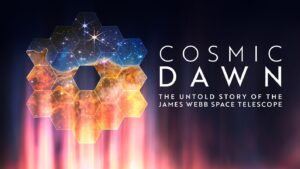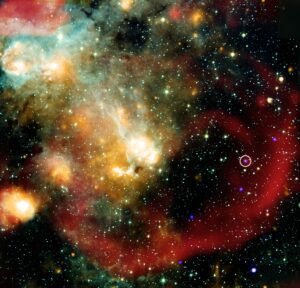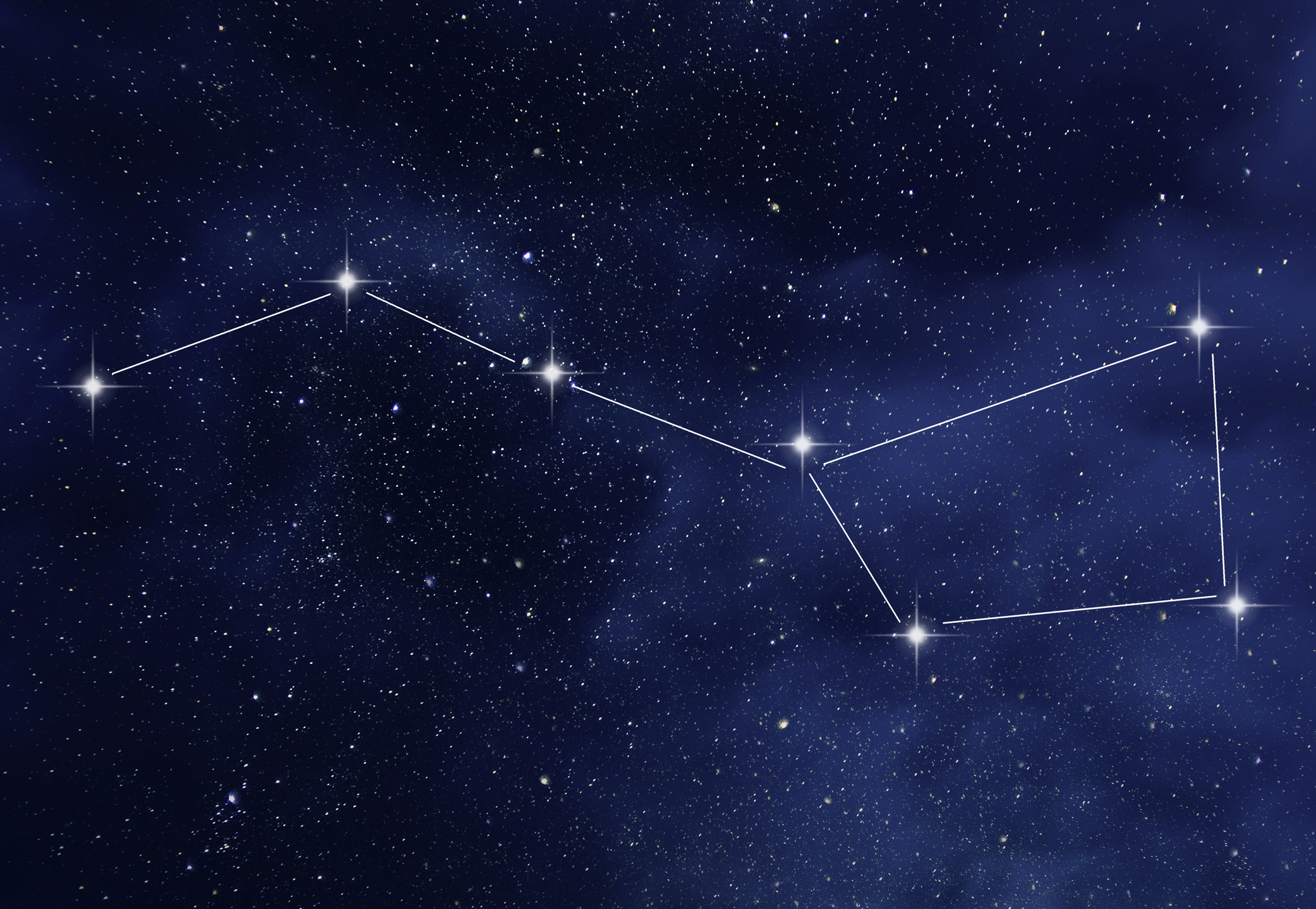The predawn hours of April 28 will see a planetary triangle form in the night sky, as Venus makes a close approach to Saturn following a conjunction, while Neptune, invisible to the naked eye, will sit just a few degrees away towards the horizon. Saturn and Venus will be below the horizon for viewers in the U.S. when they reach the point of conjunction in the hours before their appearance on the morning of the 28th. A planetary conjunction occurs when two worlds share the same right ascension — a…
Read MoreMeet the ‘Doctor Who’ actors who brought the retrofuturistic robots to life for season 2’s ‘The Robot Revolution’ (interview)
Stomping around in bulky retro-style robot suits filming the opening episode of “Doctor Who” Season 2 might have seemed like fun, but for professional creature artists Stephen Love and Rob Strange it can be quite hazardous… especially if you topple over! “When you fell, you just had to surrender to it and wait until you stopped rolling around,” Strange reveals. “It felt very safe, but it looked pretty dramatic.” Love and Strange are the main puppeteer actors inside the old-fashioned android costumes for “The Robot Revolution,” which kicked off Ncuti…
Read MoreInternational Dark Sky Week 2025: See these 10 night sky sights to celebrate
April 21 – 28 is International Dark Sky Week, a global celebration of the night sky during which like-minded organizations and people take action to raise awareness of an inevitable aspect of modern-day life: the rising scourge of light pollution. Light pollution is a serious issue for night sky enthusiasts hoping to explore the cosmos from our vantage point on Earth, and is the primary reason why powerful observatories are built in remote locations, such as the Atacama Desert in Chile. Even so, a 2022 study from the Royal Astronomical…
Read More‘We learned so much that we didn’t know’: Firefly Aerospace’s Blue Ghost moon lander mission was full of surprises
COLORADO SPRINGS, Colorado — Lessons learned and on-the-spot surprises from the first fully successful commercial lunar lander mission bolsters the chances of long-term robotic and human operations on the moon. The Firefly Aerospace Blue Ghost Mission 1 safely touched down on March 2 within the targeted Mare Crisium landing zone. Plopping down on its four landing legs, the spacecraft delivered ten science instruments and technology demonstration gear through the Commercial Lunar Payload Services (CLPS) initiative. Blue Ghost completed more than 14 days of surface operations during 346 hours of daylight,…
Read MoreEarth Science Showcase – Kids Art Collection
1 min read Preparations for Next Moonwalk Simulations Underway (and Underwater) On April 16, 2025, the Earth Science Division at NASA’s Ames Research Center in Silicon Valley held an Earth Science Showcase to share its work with the center and their families. As part of this event, kids were invited to share something they like about the Earth. These are their masterpieces. Sora U. Age 9. “Wildlife” Sora U. Age 9. “Wildlife” Wesley P. Age 2.5. “Pale Blue” Wesley P. Age 2.5. “Pale Blue” Kira U. Age 5. “Hawaii” Kira…
Read MoreLunar Space Station for NASA’s Artemis Campaign to Begin Final Outfitting
3 min read Preparations for Next Moonwalk Simulations Underway (and Underwater) Gateway’s HALO module at Northrop Grumman’s facility in Gilbert, Arizona, on April 4, 2025, shortly after its arrival from Thales Alenia Space in Turin, Italy. NASA/Josh Valcarcel NASA continues to mark progress on plans to work with commercial and international partners as part of the Gateway program. The primary structure of HALO (Habitation and Logistics Outpost) arrived at Northrop Grumman’s facility in Gilbert, Arizona, where it will undergo final outfitting and verification testing. HALO will provide Artemis astronauts with…
Read MoreSenators press Jared Isaacman, Trump’s pick for NASA chief, on his ties to Elon Musk
Jared Isaacman, President Trump’s choice to lead NASA, keeps having to explain his ties to Elon Musk. The topic came up repeatedly during Isaacman’s nomination hearing, which the Senate Committee on Commerce, Science and Transportation held on April 9. Multiple Democratic senators pressed the 42-year-old billionaire on his relationship with the SpaceX chief, who was a prominent supporter of Trump’s campaign and is now a close adviser to the president. For example, Sen. Ed Markey (D-Mass.) asked Isaacman repeatedly if Musk was in the room at Mar-a-Lago, Trump’s Florida estate,…
Read MoreSearching for the Dark in the Light
Explore This Section Perseverance Home Mission Overview Rover Components Mars Rock Samples Where is Perseverance? Ingenuity Mars Helicopter Mission Updates Science Overview Objectives Instruments Highlights Exploration Goals News and Features Multimedia Perseverance Raw Images Images Videos Audio More Resources Mars Missions Mars Sample Return Mars Perseverance Rover Mars Curiosity Rover MAVEN Mars Reconnaissance Orbiter Mars Odyssey More Mars Missions Mars Home 2 min read Searching for the Dark in the Light The Perseverance rover acquired this image of the “Hare Bay” abrasion patch using its SHERLOC WATSON camera (Scanning Habitable…
Read MoreHubble Visits Glittering Cluster, Capturing Its Ultraviolet Light
This NASA/ESA Hubble Space Telescope image features the globular cluster Messier 72 (M72).
Read MoreNASA Invites Local Middle Schoolers to Explore Agency STEM Careers
Students take a tour of the Glenn International Space Station Payload Operations Center at NASA’s Glenn Research Center in Cleveland, where researchers operate International Space Station experiments, during 4-H Day on June 14, 2024. Credit: NASA/Jef Janis Ohio middle school students will step into the shoes of real-world NASA professionals for a day of career exploration and hands-on activities at NASA’s Glenn Research Center in Cleveland. Nearly 200 students are slated to participate in TECH Day at NASA Glenn on May 1, from 10 a.m. to 1 p.m. Media are…
Read More
















